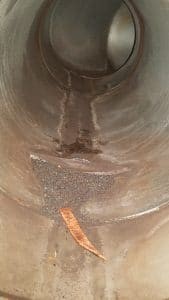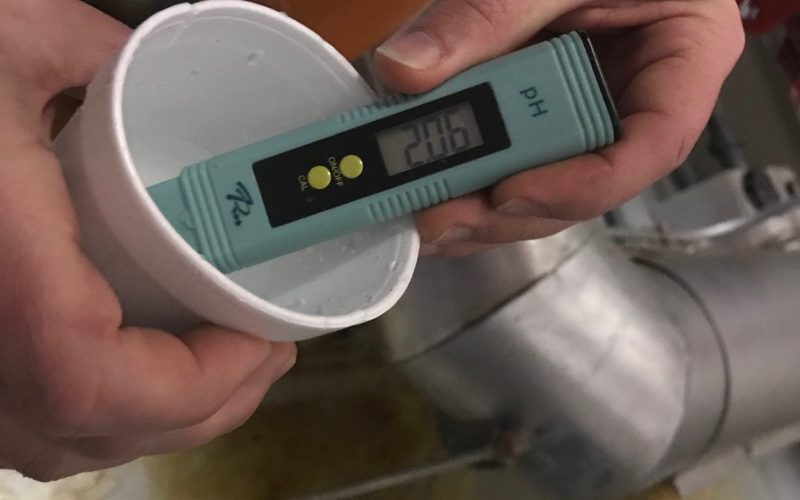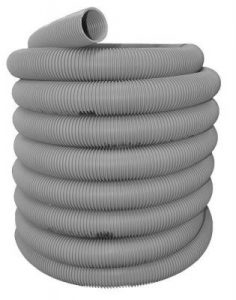Do you have a UL1738 Metal Flue with an inner liner that is deteriorating? Or perhaps some sealant or gaskets that keep turning into a white powder? This may not be a flue manufacturer issue, in fact, more and more we are seeing combustion air contamination impacting the pH levels of flue gas condensate.
In order to pass the UL1738 testing, all evaluated metals must demonstrate a corrosion rate of less than 0.0001” (0.002mm) per year. In theory, that should yield 300 years of normal operation before corrosion perforation in a 24 gauge vent. We say normal operation because there are factors that can subject any flue material to excessive corrosion rates. One of the most common occurrences would be an extremely low pH level of the condensate due to combustion air contamination. The lower the number, the more corrosive the condensate becomes. The most common contamination sources are cleaning solvents and/or refrigerants (and other fluorocarbons or halogenated compounds). We have seen chlorine sources & refrigerant leaks most often be the cause.
A few causes of corrosion on stainless flues we have experienced in the past:
- Chiller with a refrigerant leak that was ingested by the appliance.
- Large amounts of ice melt stored in the same room near an appliance utilizing the room for combustion air.
- Laundry chemicals (mostly Chlorine) being used and stored nearby – and ingested by the appliance.
- Direct vented appliance where the ducting terminated outside near a wastewater chlorine field.
 In all of the above instances, the pH levels measured at the drain were between a 1 and 2 which is much lower than it should be. After the contamination source was removed, the pH levels returned to normal. Though not all equipment manufacturers will publish what levels are acceptable, a good number of them do. Those that do publish this information require the range to be between 3 and 5. This range lines up with the UL guidelines as well. Please also note that each number represents a 10-fold change in the acidity/basicness of the condensate. Condensate with a pH level of 2 is ten times more acidic than condensate has a pH of 3.
In all of the above instances, the pH levels measured at the drain were between a 1 and 2 which is much lower than it should be. After the contamination source was removed, the pH levels returned to normal. Though not all equipment manufacturers will publish what levels are acceptable, a good number of them do. Those that do publish this information require the range to be between 3 and 5. This range lines up with the UL guidelines as well. Please also note that each number represents a 10-fold change in the acidity/basicness of the condensate. Condensate with a pH level of 2 is ten times more acidic than condensate has a pH of 3.
So, the next time you see excessive corrosion on UL1738 Stainless Steel Flues, grab a simple pH test kit and rule out combustion air contamination first. It could save you both time and money.



